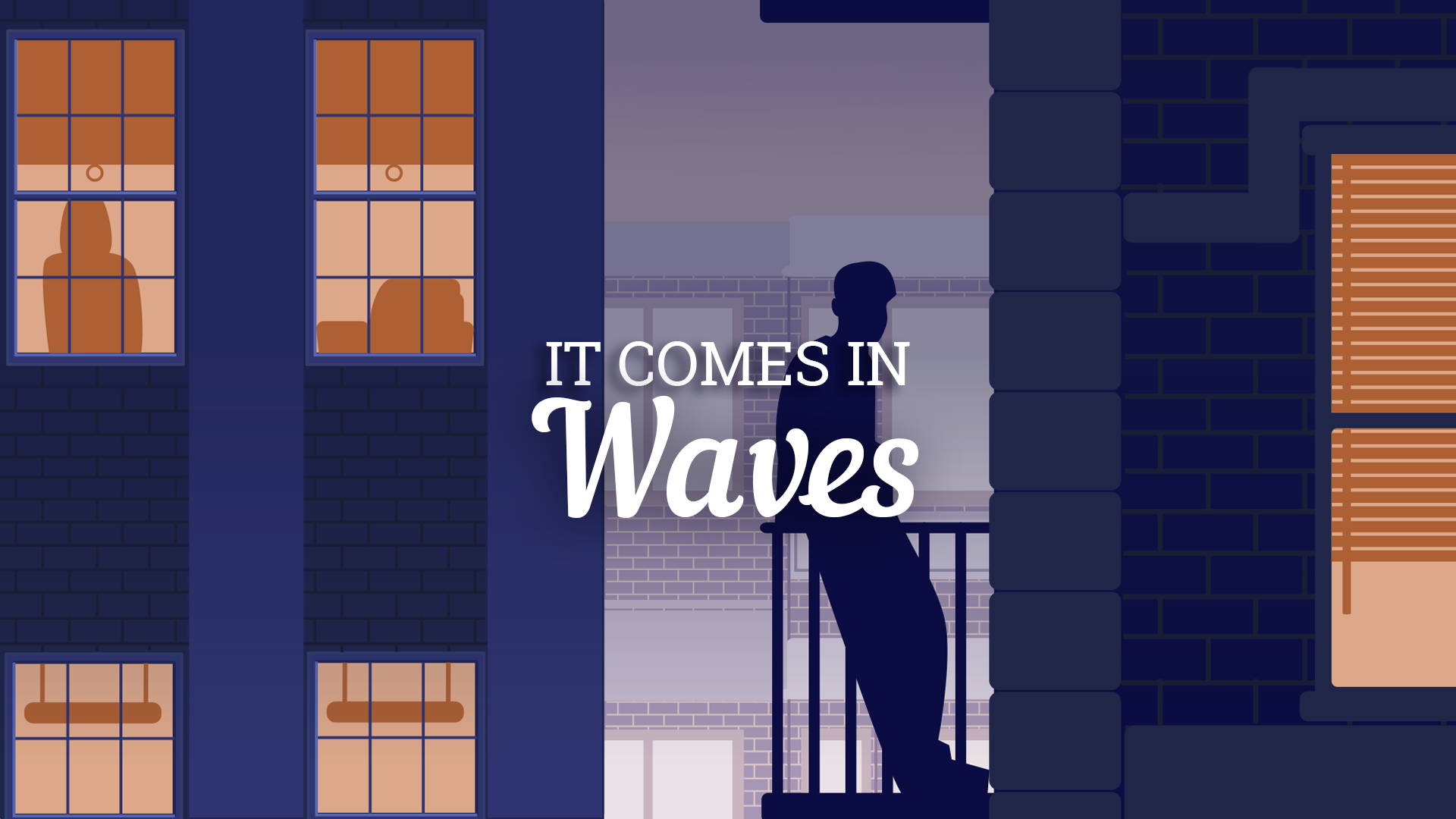Game Information
| Title | It Comes In Waves |
| Presenter(s) | Courtney Blamey, Mia Consalvo, Lyne Dwyer, Michael Iantorno |
| Session | Conference Reception, Game Exhibition, and Poster Session |
| Time | Wednesday, October 12, 7:00p-9:30p |
| Location | MSU Union Ballroom |
| Format | Game Exhibition |
| Screenshot |  |
| Description | It Comes In Waves follows the story of Beattie, a caregiver who works between two long-term care facilities, Innis House and Meadowvale. Beattie is not a specialised healthcare worker, but someone who ensures general care, food, and socialisation with clients. The player's tasks include cleaning the facilities, delivering meals, answering phones, and checking in on residents. The game takes place over the first four months of the pandemic, exploring the shifts in discourses and protocols around work expectations as each month ticks by. It examines the anxieties of managing risk in our participation in public life, for example, when we have to go out to retrieve groceries or prescription medication, potentially being confronted by individuals who refuse to wear a mask or socially distance, or peddle the belief that the pandemic is a global conspiracy.
Beattie accesses work assignments through an agency, as many caregivers working at private institutions do. During the pandemic in Canada, long-term care facilities have been hit the hardest by COVID-19, resulting in agency-affiliated workers being forced to give up one of their jobs to avoid cross-contamination and exposure between facilities. The game concludes when Beattie is told she can only work at one facility with no assurances to hours or options for extra work. This game was designed as part of the SSHRC-funded "Social Class and Games" research project exploring the intersection of socioeconomic class and games. Our team wanted to design a game that entwined social class in both the narrative and game mechanics. We chose the pandemic as the setting as the global crisis has laid existing class inequities bare. Simultaneously, as is possible when making games that represent hardships, our team tried to avoid making a "misery simulator" by including some lighthearted and jovial moments amongst the harsh realities of the early months of the pandemic. Within this, we were also cognisant that we did not want to produce what is known colloquially as an "empathy machine", where a game (and its designers) claims to perfectly emulate a specific (often marginalized or underrepresented) lived experience. While It Comes In Waves was not designed with a specific target audience in mind, whether in an academic, leisure, or work context; rather, this game is meant for anyone who is interested in how games can explore the dynamics of everyday class struggles as these problems aspects intersect with other social and material forces at work. |
